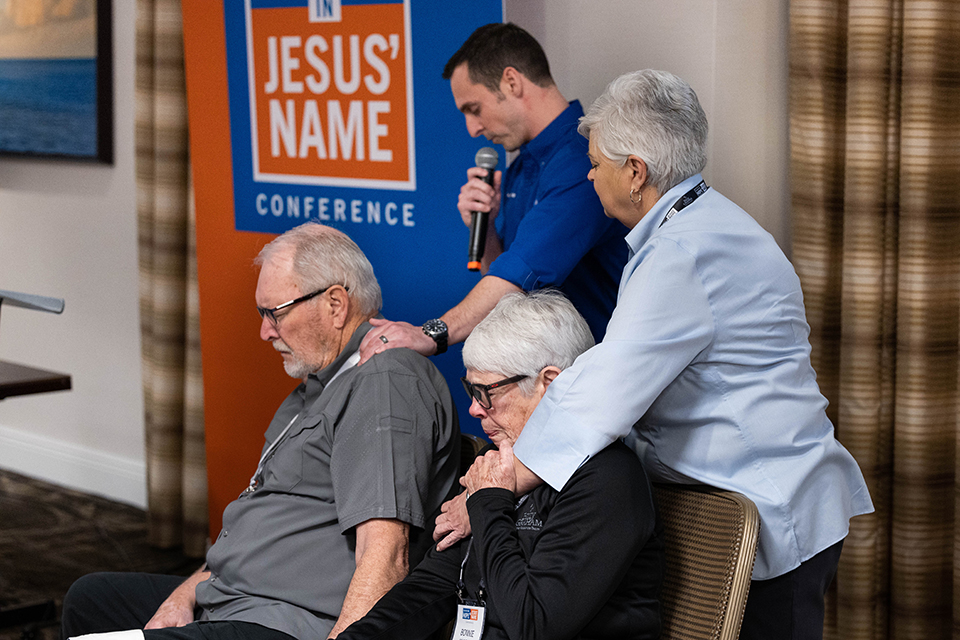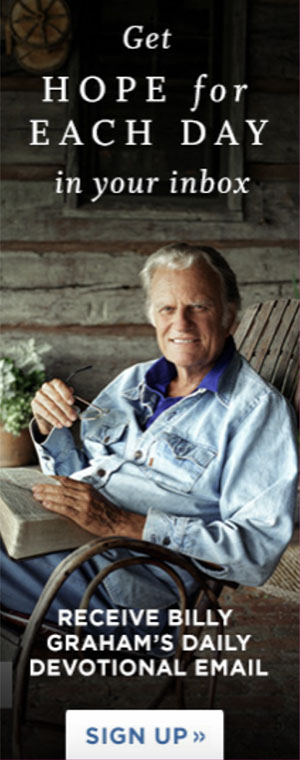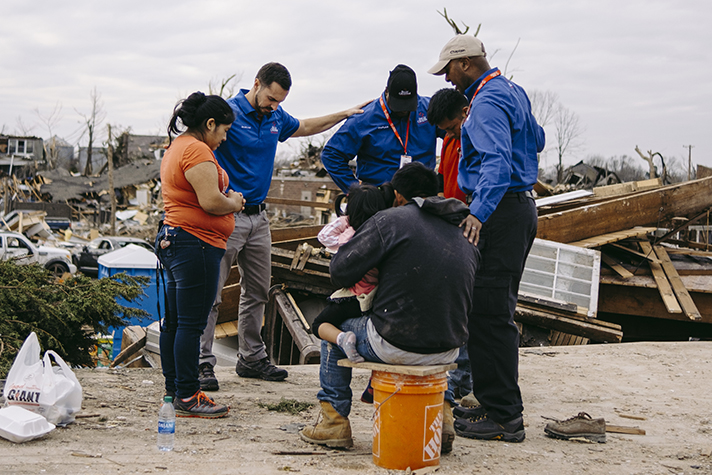
After 20 years with the Billy Graham Evangelistic Association (BGEA), International Director of the Rapid Response Team Jack Munday retired on February 7. He recently looked back on the last two decades of chaplain ministry and serving people in their greatest time of need.
Imagine you’re in crisis mode. Maybe your home was lifted off its foundation in a tornado, ransacked by a hurricane or reduced to ashes in a merciless wildfire—taking with it years of everything you hold dear. Maybe you lost even more than that—a loved one—in a natural disaster or senseless shooting.
Your life has been flipped upside down. You’re overwhelmed, overcome by grief and struggling to figure out what’s next.
That’s when two people in blue collared shirts calmly approach you and gently ask if they can pray for you.
‘Two by Two’
In the early 2000s, Jack Munday—who would later be international director of BGEA’s chaplain ministry—says he didn’t know what a chaplain looked like.
He’d taken a job at BGEA in February 2002, just five months after 9/11. In the wake of a tragedy that would change the fabric of our nation, BGEA sent a team to New York City to set up a prayer center for thousands of people experiencing deep pain and loss.
That’s where the concept of the Billy Graham Rapid Response Team (BG-RRT) was born, though the initial focus was on responding to churches’ requests for training on how to minister to people in crisis.
>>How a ministry was born out of national tragedy
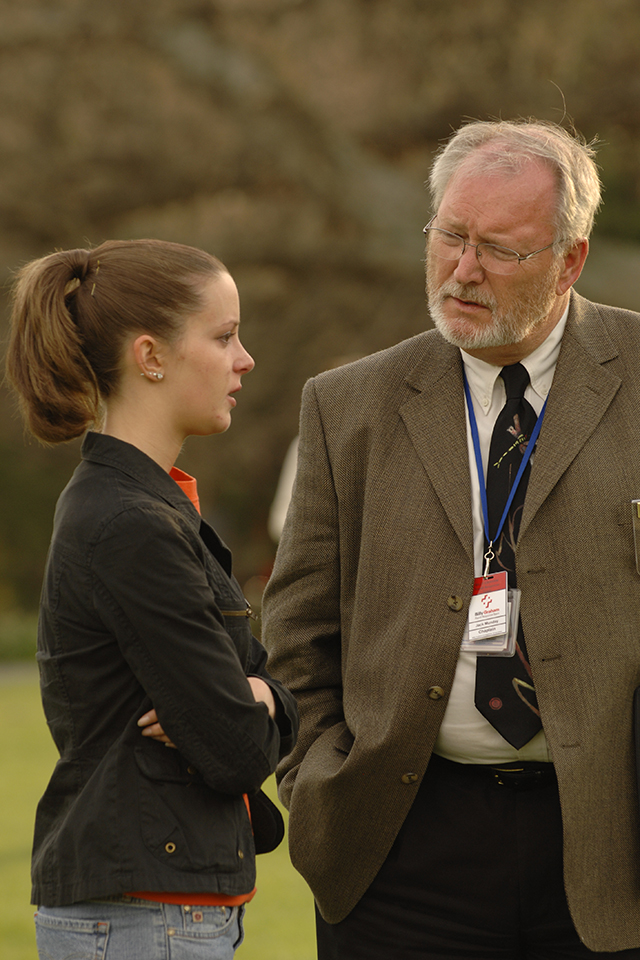
By 2004, Munday was in Florida, helping respond to a chain of four deadly hurricanes that claimed more than 3,200 lives in a six-week period. Franklin Graham asked him to put together a team of chaplains, marking a transition from training to on-the-ground ministry.
Munday called on six people who’d helped with the prayer center in New York, but wasn’t sure what they were going to do once they arrived in Florida.
That’s when God told him very clearly, “Follow up two by two.”
Munday filled some cardboard boxes with Bibles and brochures. He went to Office Depot and printed three maps identifying homes that sister ministry Samaritan’s Purse was working to rebuild. Once the six people arrived, each pair received a map to follow up with homeowners impacted by the storms.
Out they went, two by two, to knock on doors and ask how they could pray. The Rapid Response Team as we know it today was born.
“I think that first day, there were three first-time decisions [for Christ],” Munday said.
Nearly 20 years later, the Rapid Response Team includes a network of 2,500 vetted chaplains. The team has deployed to 24 countries, prayed with more than 602,000 people, and has offices in Canada, the United Kingdom and Australia. It also has a thriving law enforcement ministry.
>>Chaplains are currently serving fleeing families in Ukraine
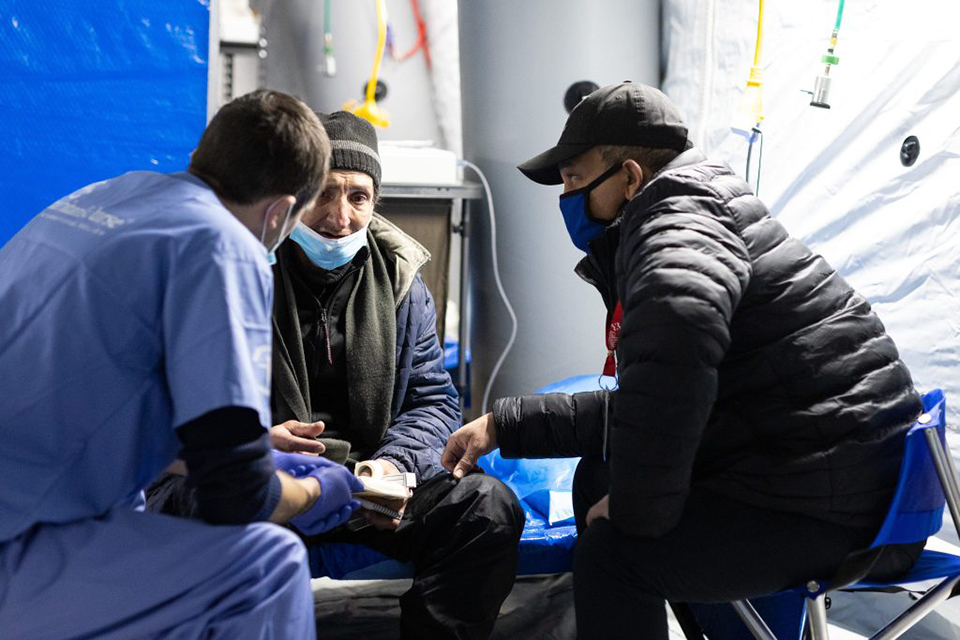
Everyone Is Dealing With Something
Munday often says people are already going through something before a disaster strikes. Maybe it’s a divorce, a diagnosis, a wayward child or job loss.
That’s something for every Christian to keep in mind, chaplain or not. Whether at the grocery store, doctor’s office or a basketball game, everyone can be aware of those around them.
Munday, for example, will ask a person with tattoos the story behind the ink. Before eating at a restaurant, he’ll ask the waiter or waitress if he can pray for anything specific while blessing the food. Those small gestures open the door for conversation.
“Asking questions. That’s the heart of a chaplain, to be able to ask good questions and be a good listener,” he said.
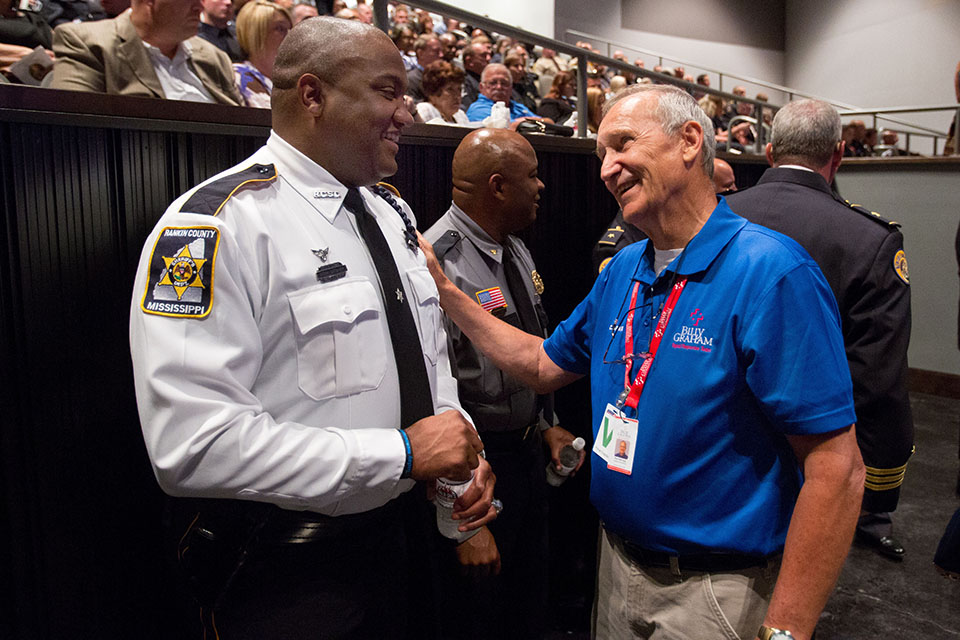
The Most Common Prayer Requests
Devastation has a way of pushing people into despair, depending on their spiritual state at the time of crisis.
The most common prayer requests chaplains receive are for hope and healing.
“The chaplain’s prayer for himself is to be sensitive to the Holy Spirit to discern what the needs are for that person,” Munday said.
In February 2009, a series of deadly bushfires across Southern Australia came to be known as Black Saturday. With temperatures well over 100 and winds above 60 mph, thousands of homes were destroyed and 173 people perished.
Munday was there with the Rapid Response Team in the aftermath. He remembers the story of 12 college counselors who’d been at a Christian retreat center when they saw the fire coming. They got into their cars and fled down the mountain, only to realize they left one person behind.
“The despair on their face, the grief, you could cut with a knife,” Munday said.
A day after talking with the remaining 11 counselors, Munday met a man whose fence had burned down. That’s nothing, Munday thought, compared to what the college students had just been through.
Munday kept in mind that this man may have been experiencing crisis before the bushfires. He asked the man about the last six months of his life and the man collapsed, weeping. He had lost his wife and two children in three separate accidents.
“That’s all it took was that fence,” Munday said.
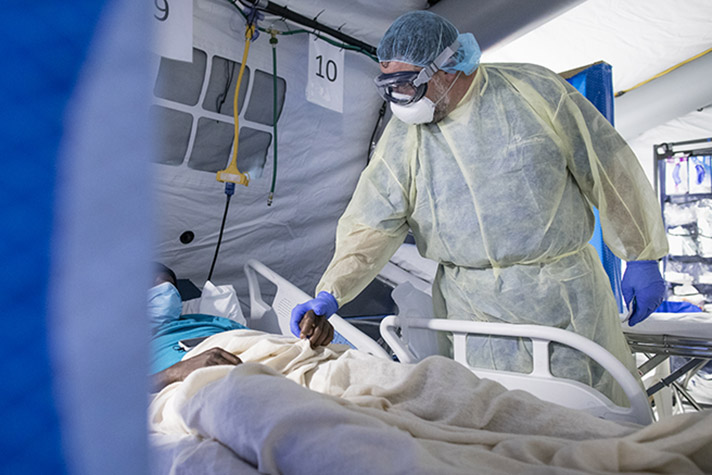
Don’t Say This to Someone in Crisis
The first question out of a chaplain’s mouth can either turn someone off or open the door to a healing conversation.
Above all, Munday warned, don’t ask, “How are you doing?”
He thinks of a Colorado family whose house burned down. The family had provided safekeeping for war medals their father earned in Vietnam, but they were lost in the fire—until a disaster relief team from Samaritan’s Purse located a glob of melted medals.
For others, it may be lost photographs that meant the world to them.
In that moment of grief, a chaplain would avoid asking how the family is doing. How do you think I’m doing? they might wonder. That’s a dumb question.
Right then, a family member could shut down or lash out.
Instead, a chaplain will ask, “How are you holding up?” Then comes an equally important part: listening.
“Compassionate listening draws people,” Munday said.
Munday’s wife, who also serves as a chaplain, could listen to someone talk for half an hour without saying a thing—and the person will express how helpful it was just to talk through their emotions.
The Emotional Toll on Chaplains
In two decades of ministering to people in crisis, there are certain scenes that stick out to Munday.
Like the elevated level of trauma felt across Newtown, Connecticut, after the Sandy Hook Elementary School shooting left 26 people dead, including 20 children.
Or the shooting at Virginia Tech in April 2007 when a senior English major opened fire, ending 32 lives.
Or seeing a dead body on the road in Haiti following a catastrophic earthquake that shook the nation’s capital in 2010, claiming 250,000 lives and displacing another 1.5 million more.
In crises like this, the emotions are heavy, the distress palpable. There are sights and smells and sounds not easily forgotten.
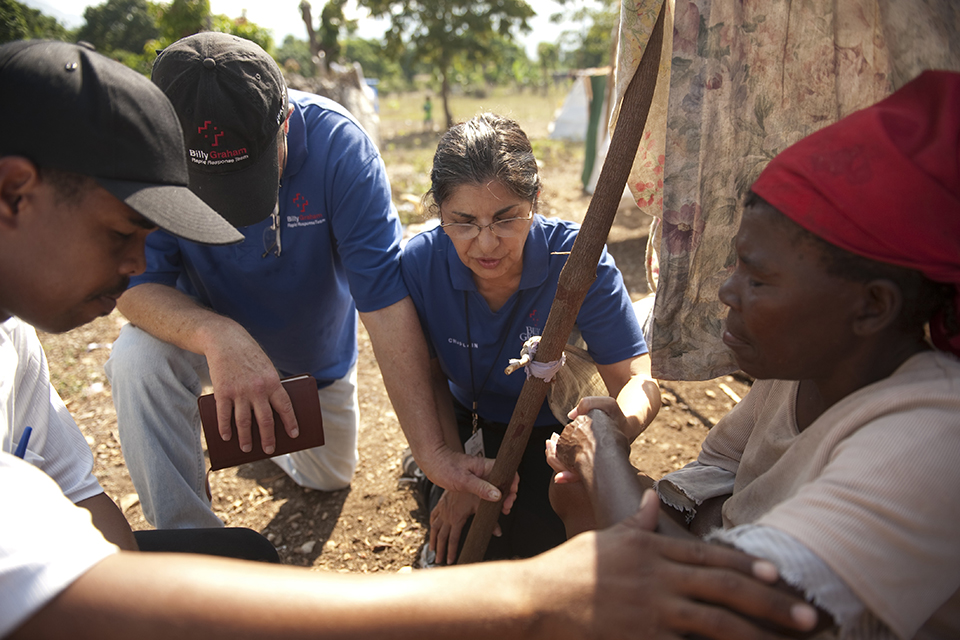
At each deployment, chaplain coordinators debrief with their teams every day. They ask if there are things chaplains can’t shake—anything lingering they need to process. Chaplains typically deploy for a week at a time and debrief again a week after they get home.
Marching Orders
Over time, the world of emergency management has become more aware of the BG-RRT. Chaplains look to respond to situations when the local capacity is overwhelmed, and as Munday said, “The doors of opportunity are greater than ever before.”
It’s tough ground to till when people are at their lowest moments in high-stress situations, but in 20 years of ministry, Munday learned a lot about God’s provision.
“God is just so faithful, and He opens doors in the least likely places,” he said. “He has a heart for people and just wants us to be available.”
It was Franklin Graham’s vision for BG-RRT to develop an army of chaplains who can deploy anywhere in the world at a moment’s notice to provide emotional and spiritual support in crisis.
“That was our marching orders,” Munday said, “and that hasn’t changed.”
